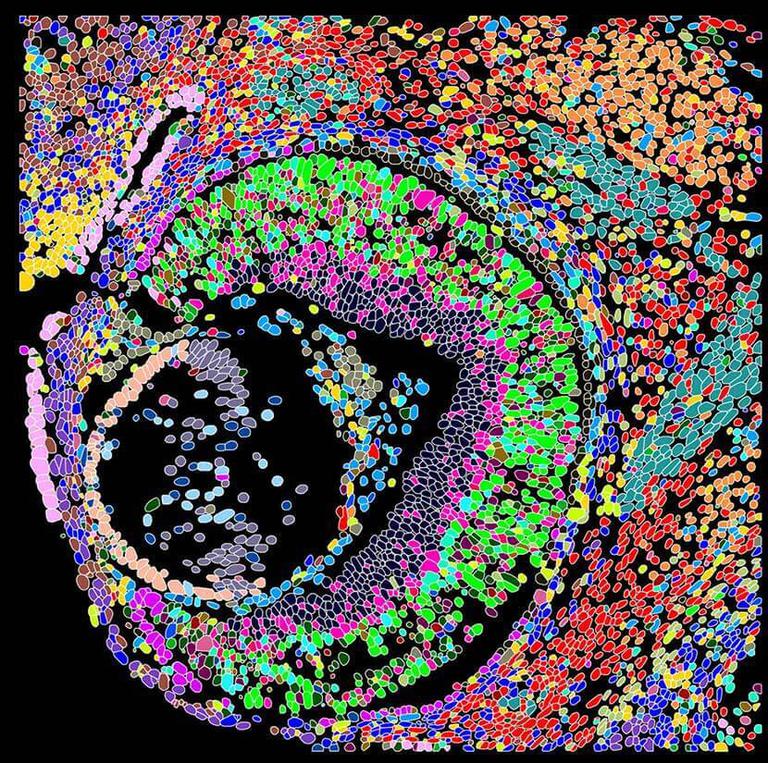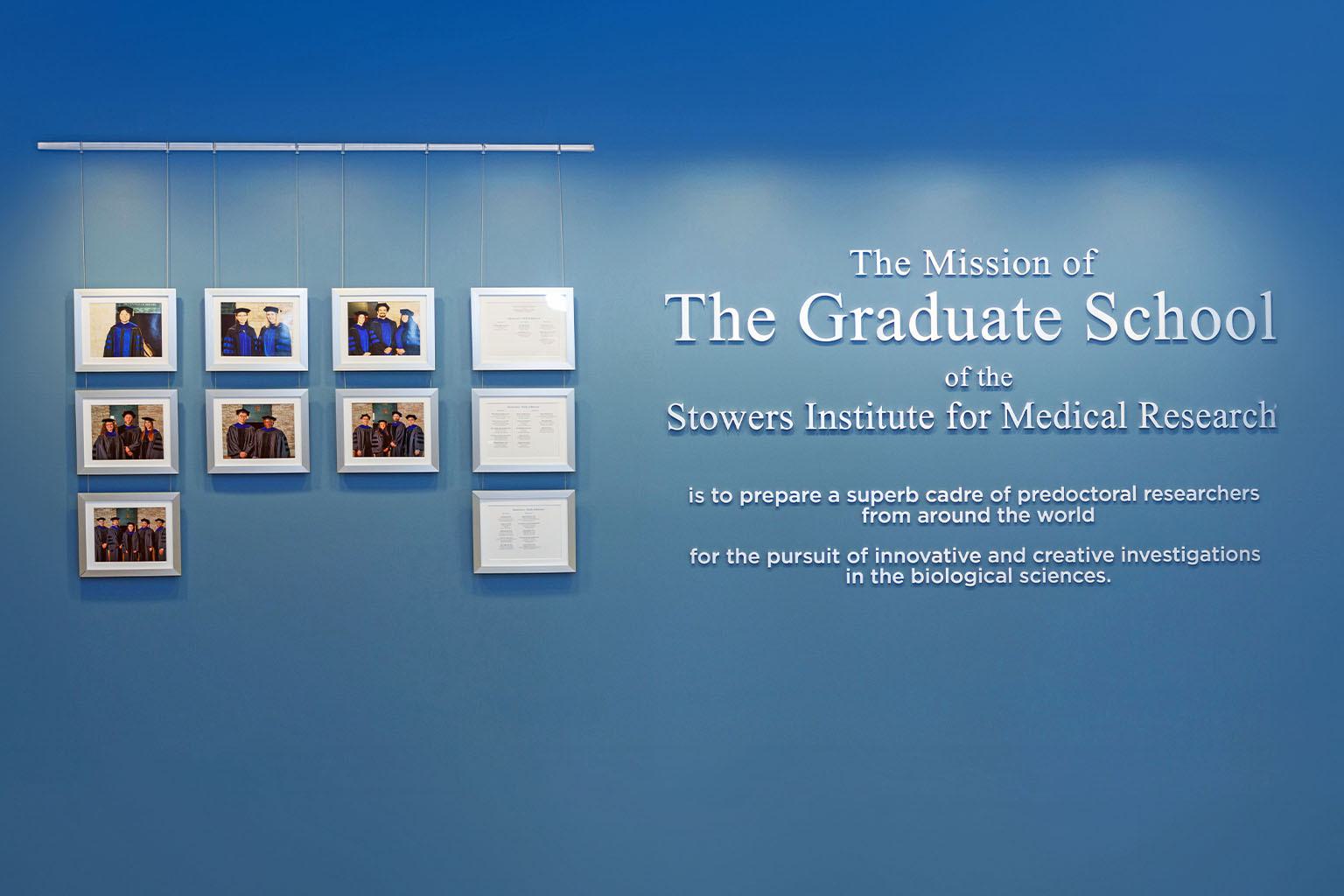Instead, Hawley convinced Principal Investigators and Technology Center scientists to take chances and develop and teach seven course modules over the first semester. Each two-week module, focused on topics like genetics, genomics, and neuroscience, was designed to immerse predocs in the various areas of research at the Institute. This same modular structure exists today. With hands-on experimental components and multiple instructors, predocs are solving scientific problems in addition to fast-paced learning.
Science from the start
Once the modules conclude in December, predocs select three of the Institute’s 21 Principal Investigator labs to rotate through over the next several months. After completing rotations, each predoc selects a lab to conduct thesis research in over the course of their time at the Graduate School.
“We are focused on a research-centered curriculum while simultaneously helping predocs choose the right lab in a meaningful way,” said Hawley. “By the time students make their rotation decisions, they have already met, spent time with, and worked with nearly every faculty member during the modules.”
Individuals who are admitted to the Graduate School distinguish themselves with both scientific acumen and a genuine passion for research. It is this combination that Hawley attributes not only to the success of the school but the success of the predocs as well.
“Predoctoral and postdoctoral researchers are the engines of science but predocs have a unique opportunity,” said Hawley. “They have the opportunity to explore new approaches, and have the desire and affinity to develop new avenues of research. It is one of the few times in a scientific career when you really can take chances.”
Cori Cahoon took this chance. Working with Zulin Yu and a member of the Histology team, they combined 3D expansion microscopy with another microscopy technique, structured illumination microscopy, to resolve the molecular structure of the synaptonemal complex, a conserved protein complex that is essential for fertility.
Scientific creativity, support, and development
Basic ambition, creativity, and initiative define incoming predocs. Once they arrive, these attributes are encouraged and fostered, allowing predocs the freedom to explore scientific questions of substance over style.
Beyond the broad scope of foundational biology to choose from—from development to regeneration to neuroscience—predocs receive support to attend national and international conferences. In addition, they have access to widely renowned scientists through Institute-hosted conferences as well as weekly seminars like the Stowers Wednesday Lecture Series.
Working with and educating the next generation of biologists has resulted in established researchers gaining fresh perspectives and viewing problems from new angles.
“Some of my students are coming up with things that I never thought about,” said Stowers Investigator and Faculty Member Ron Yu, Ph.D., “and I don’t want them to be restricted by the confines of my own understanding.”
Graduation and beyond
Graduates of the Stowers Graduate School are pursuing prestigious postdoctoral fellowships worldwide. Just over 10 years after its establishment, alumni like Kobe Yuen, Ph.D., María Angélica Bravo Núñez, Ph.D., and Cori Cahoon, Ph.D., are proving its success. Yuen is now a principal scientist at the biotech company Genentech, and Bravo Núñez and Cahoon recently accepted faculty positions at Cornell University and Colorado State University, respectively.
Hawley stepped down as Dean after nine years of service but is still highly involved with the school and extraordinarily proud of how far it has come and of the all the predocs who make and have made it more than just a school—a family. He praises current Dean Matt Gibson, Ph.D., Vice Dean SaraH Zanders, Ph.D., and President Betty Drees, M.D., for their success in earning accreditation while maintaining the high standards the Graduate School was founded upon.
“The design of the Graduate School was intentional, and receiving accreditation was external validation of the quality of the program,” said Gibson. “Not only is the Institute creating great science, but we are also creating the next scientific leaders in the field of biology.”
The fruitful collaboration that accelerated Cori Cahoon’s research and allowed visualization of a molecular structure never seen before is just one example of what makes the Stowers Graduate School extraordinary. “What they accomplished was a technical tour de force to discover new findings in the field,” said Hawley. “The synaptonemal complex structure was so much more complicated and beautiful than we ever imagined. It completely changed the way we think about this structure and what it does.”




